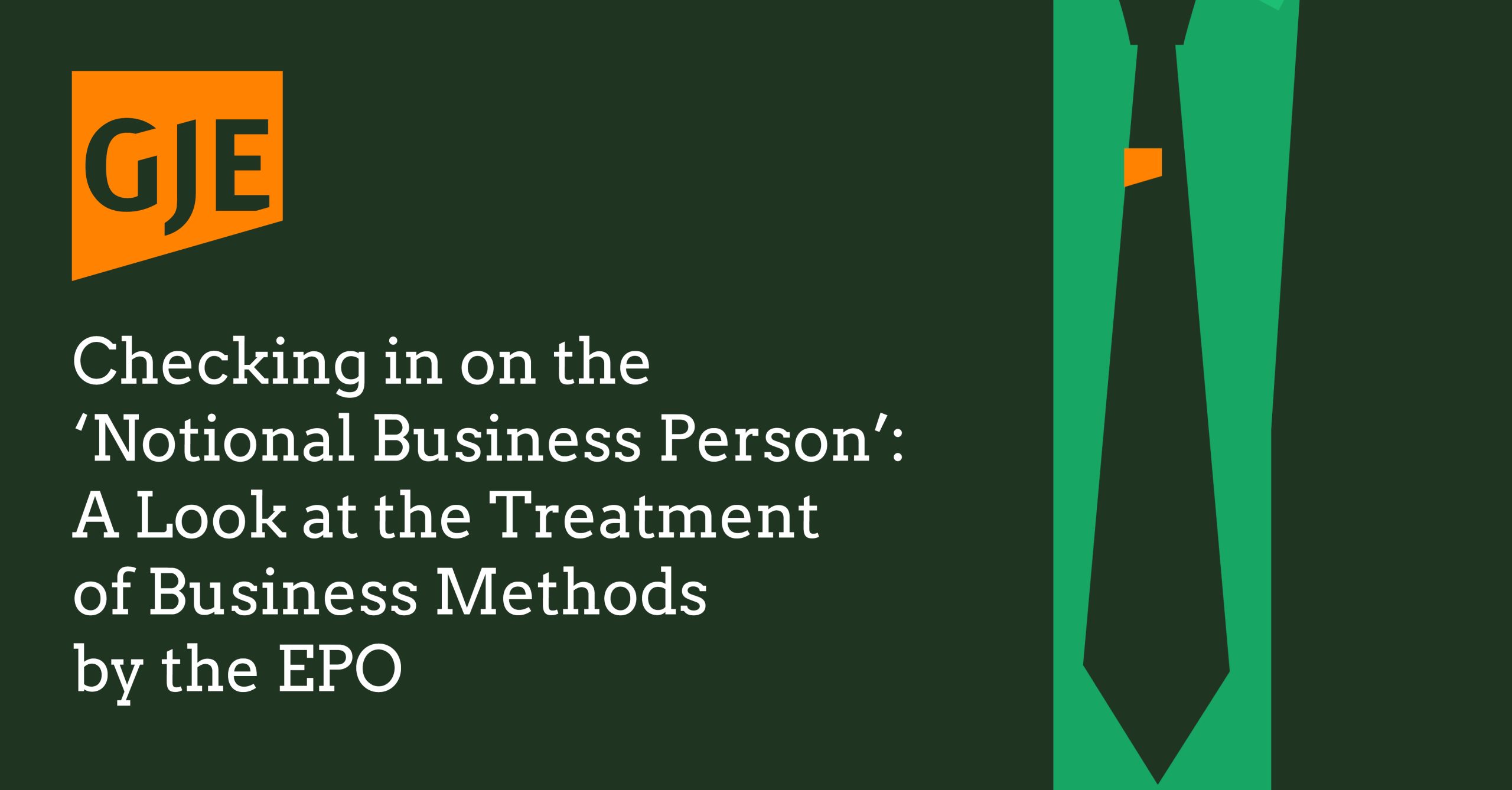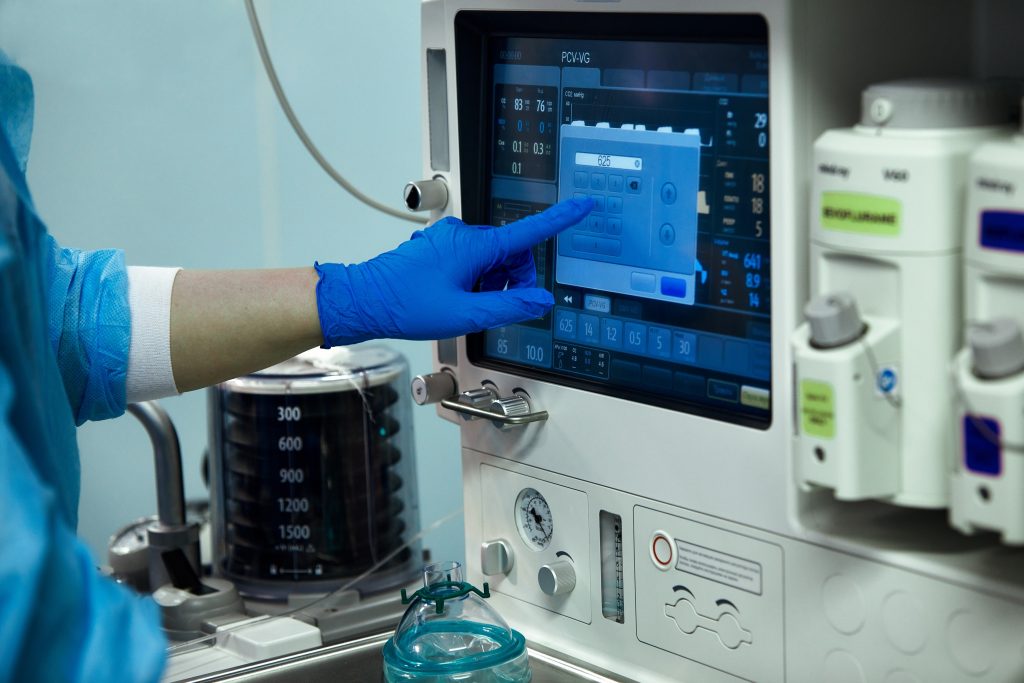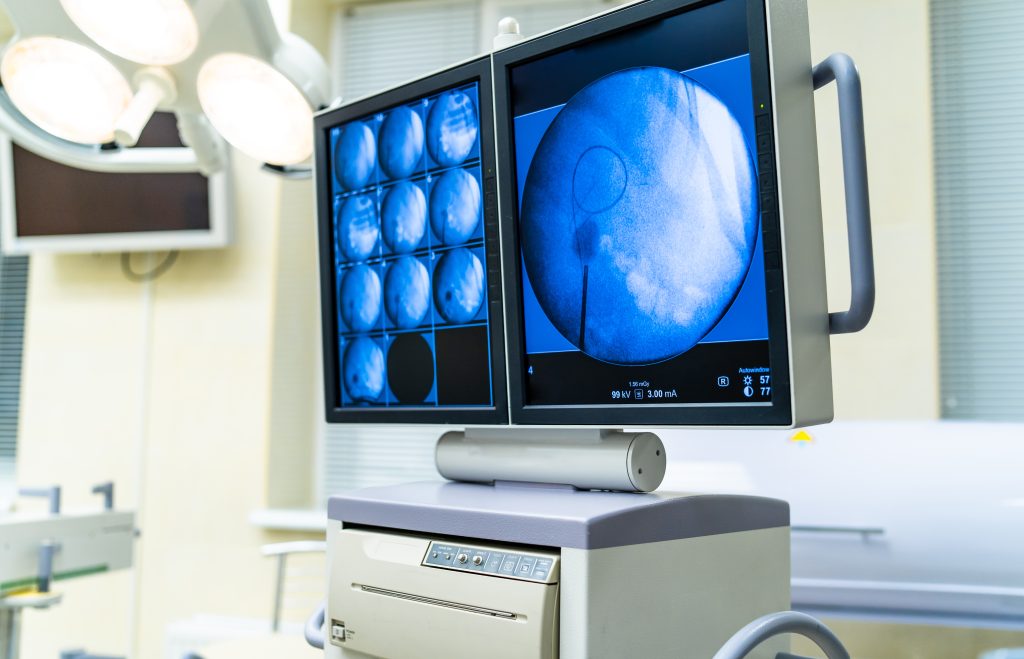
Background
Applicants and practitioners filing patent applications for computer-implemented ‘mixed-type’ inventions will be familiar with EPO examiners striking out various features of the claim as non-technical and therefore unable to support an inventive step. Often what is left following this rigorous dissection of the claim (formally known as the COMVIK approach, following T 641/00) is little more than a computer system, which is then deemed obvious.
Instead of providing a definition for the term ‘technical’, the EPO Boards of Appeal have been developing case law to help distinguish between features of the claim that can be considered technical with those that cannot. The most influential case in recent years within the business method space has been the CardinalCommerce decision T 1463/11 (see our article here). This introduced the concept of a ‘notional business person’: a hypothetical person having specialist business knowledge but no specialist technical knowledge.
One can imagine a meeting between the notional business person and the skilled person in which the business person explains the business problem and asks the skilled person to develop a technical system to solve it. The information imparted at this meeting forms a ‘requirements specification’ which is part of the (non-technical) conditions for the technical problem to be solved. One can then ask whether the skilled person has any difficulty in configuring the technical system to meet those requirements. If the answer is ‘no’, the EPO will likely deem the invention as a routine automation of a business method, which is inherently unpatentable. Conversely, if the answer is ‘yes’, it suggests that a non-obvious technical solution has been created; or, in other words, a patentable invention that just happens to operate in a business environment.
Defining the role of the notional business person
When put into practice, the discussion with the EPO often follows a path where the applicant attempts to minimise the notional business person’s technical understanding of the relevant system, thereby leaving more features available to support an inventive step, while the EPO examiner does the opposite. Various decisions from the Boards of Appeal have explored this issue.
In T 1082/13, the Board held that the notional business person is not completely technically blind and that the choice of where to do a calculation in a distributed system is not necessarily technical, but can be driven by administrative considerations. What the notional business person does not know, however, is how exactly it can be implemented on a computer system.
In T 2455/13, the Board held that the notional business person possesses an understanding of the possibilities for realising business-related concepts on network-based computer systems. They have sufficient knowledge of computer and network-based business processes (e.g. in the domains of payment processes, materials logistics and insurance) to conceptually grasp what is feasible on an abstract meta level. What they do not know is how exactly an implementation is done on the computer. Therefore, if claimed features are merely specified on an abstract meta level as modules and represent functions as the business person would take as a basis in their concept, they are unlikely to qualify as technical. Only by the indication of real implementation steps in the claim can these modules qualify as technical features.
T 1749/14 (see our article here) related to an example in which the invention required new infrastructure, new devices and a new protocol linked to the devices and their capabilities. The Board concluded that this goes beyond what the notional business person knows but rather concerns technical knowledge of how to implement the idea beyond a straight-forward 1:1 programming of an abstract business idea.
Nonetheless, determining which features of the claim were conceived by the notional business person as opposed to the skilled person typically remains a key point of contention when arguing for the inventive step of inventions in the business sphere. This is exemplified in T 0550/14, which is the most recent notable decision to cite CardinalCommerce.
Application of CardinalCommerce to T 0550/14
In the case of T 0550/14, the invention related to a computer-implemented method for managing the funding of catastrophe relief efforts, allowing charitable organisations to secure funding before a catastrophic event occurred. The Examining Division had stated that no technical problem could be derived from such a non-technical method which, in the form of a business specification, was given by the business person to the skilled person for implementation. It considered the closest prior art to be a notorious (networked) computer system involving interconnected, networked computers. The adaptation of this notorious computer system was seen to follow the business specification in a straightforward and obvious manner.
Conversely, the appellant argued that in known business methods for managing funds for catastrophe relief efforts, a charity collected funds that were then used to purchase cover for disasters. Before the priority date, there was no incentive to develop an entirely new business model of the invention, involving the expertise of an assurance expert and a capital risk expert without knowledge about parametric triggering criteria (as claimed). These criteria are measurable parameters and therefore technical in nature. Consequently, technical knowledge was required to develop the new business method.
A key point of contention was whether the parametric triggering criteria relate to a technical feature of the claim. Claim 1 referred to:
“defining the linked catastrophe by a type of catastrophe, a geographic area, a parametric index indicative of the severity of catastrophic events, and severity threshold values for triggering payout of the protection to the charitable organization by means of the data structure (11), wherein the severity threshold values comprise criteria for the intensity of the catastrophic event and/or population number affected by the catastrophic event;”
and
“triggering payment of capital to the charitable organization depending on the parametric index of the received catastrophic event information and the defined severity index threshold, wherein the payment module (13) of the computer system (1) is triggered to pay invested capital upon occurrence of a catastrophic event assigned to the financial product for refunding relief efforts for the catastrophic event, and wherein the amount paid depends on the parametric index.”
The appellant argued that the implementation required an understanding of data structures, computer process steps and the interaction between the different computing systems to design a trigger-based management of the funding of catastrophe relief efforts. The invention solved this problem with a decentralised, networked system where different components and systems interact with each other. This went beyond the normal technical knowledge of the skilled person and beyond a standalone networked computer. The Board was unpersuaded and made the following remarks:
“the business person in the form of an insurance expert would naturally have to consider the conditions under which the payout would be made. These conditions are part of the business method and would depend on the type of financial model being used. Whereas a conventional insurance might link the payout to loss, the method of the invention links the payout to the nature of the catastrophe, which makes sense if the cost is being covered by a financial product. In the Board’s view the “parametric trigger” is simply a broad term introduced to cover such conditions as is evident from pages 6 and 7 of the application. For instance, a catastrophe of a hurricane in the Caribbean, as shown in Table 1 on page 7, has the parametric trigger of wind speed, size of storm and location. In the Board’s view, determining this parametric information, the triggering criteria and the trigger level does not require any technical considerations. Furthermore, the business person would be aware that the relevant information would be available from providers for weather data and catastrophe information.”
This rationale appears to be generally consistent with T 1082/13 and T 2455/13 and show that particular attention will be paid to whether any technical problems are identified within the patent specification. If the specification gives the impression that what is being described is essentially just the implementation of a business idea (absent of any credible implementation challenges faced by a technically skilled person) then securing a grant from the EPO may prove difficult.
Practical tips to be taken from T 0550/14
What makes T 0550/14 particularly interesting is that it was clearly written with a view to influencing the behaviour of other Boards and the lower-tier Examining Divisions. This is evident from the decision’s wording and the fact it was assigned the second highest rating for publication and distribution (category B: for distribution to Board chairmen and members).
The appellant argued that the application should be remitted to the Examining Division so that it could at least be searched (something the Examining Division had refused to do). The appellant also asked the Board to define criteria that the Examining Division should use to prove that a feature is not technical. The Board refused these requests and made the following comments:
“The appellant’s wish for the Board to define criteria that the examining division should use to prove that a feature is not technical is tantamount to defining the term technical, which the Boards have consistently declined to do. However, as stated in e.g. T 2314/16 – Distributing rewards/RAKUTEN at points 2.6 to 2.8, over the years the case law has provided guidance on the issue of technicality. Recently, the Board has tended to use the framework for discussion given in the CardinalCommerce decision (T 1463/11 – Universal merchant platform/CardinalCommerce) to help classify whether borderline features of a claim are on the technical or the non-technical side.
It is thus clear that some discussion can and ought to take place. However, rather like objections against added subject-matter, one is essentially trying to prove a negative which tends to be a rather short exercise. On the other hand, the appellant is trying to prove a positive which involves more argument. Thus an objection from the division should probably start with a prima facie assertion that the feature in question is non-technical, perhaps because it is in one of the exclusions listed in Article 52(2) EPC, or a related or analogous field. If this is uncontested then this would be enough. However the Board considers that it is then up to the appellant to provide arguments why there is a technical effect or that some technical considerations are involved. The division should consider these arguments and give reasons why they are not convincing. As mentioned above, the Board is satisfied that this happened in the present case.
One final piece of advice for examining divisions would be where possible to search for and start from a document that already discloses some of the alleged non-technical features, thus avoiding the discussion for these features (see for example, T 756/06 – Displaying a schedule/FUJITSU, point 5 or T 368/05 – Integrated account/CITIBANK, point 8).”
The following conclusions can be derived from the Board’s comments:
1. CardinalCommerce remains good law
In our experience, examiners can sometimes seem hesitant to engage in a discussion concerning the application of CardinalCommerce T 1463/11, so this endorsement from the Board is welcome.
However, as a note of caution, it remains the case that the vast majority of cases citing this decision arise from one specific Board (3.5.01), which is the same Board responsible for T 1463/11. This may be because most business method cases on appeal are assigned to this Board but it would seem not exclusively so. Therefore, appellants who are assigned another Board may do well to emphasise the significance of CardinalCommerce T 1463/11 in their arguments.
2. Where possible, the Examining Division should conduct a search rather than refer to systems that are “notoriously known” as forming the closest prior art
The Board seemed sympathetic to the appellant’s argument that the Examining Division should have at least performed a search for prior art relating to the invention. This point is emerging as a recurring theme in recent decisions and opinions issued by Boards of Appeal, which criticise the Examining Division’s reliance on citing notoriously known systems instead of performing a search. As a result, applicants and practitioners working in this field may be able to cite this decision when facing difficulties overcoming this initial obstacle during the prosecution of an application.
Ultimately, in the case of T 0550/14 the Board felt justified in not remitting the case to the Examining Division because it would not have made a difference; the feature of the claim on which the appellant relied for contributing an inventive step was non-technical. Consequently, the Examining Division reached the correct decision. Although not mentioned by the Board, the decision not to remit the application seems consistent with Article 11 of the new Rules of Procedure of the Board of Appeal, which raises the threshold for remittal to prevent a potential back-and-forth between the first-instance department and the Board of Appeal.
3. Applicants should not be surprised if the examiner initially regards many of the features of the claim as non-technical – the responsibility lies with the applicant to challenge this
For inventions that relate to business methods, it can be assumed that the technical aspects of the invention will be scrutinised. In fact, this is frequently the starting point for EPO examiners; the burden of proof rests with the applicant demonstrating that a technical problem is being solved in a non-obvious way. In the case of T 0550/14 the Board noted:
“The Board agrees that in this field there is a danger of simply asserting that certain features are nontechnical with no basis. Indeed, the Board has seen decisions where the reasoning has not been fully convincing. But this is not one of them.”
To improve the likelihood of success, any credible technical effects should be thoroughly explored with the inventors at the time of drafting the patent application and identified in the specification. Emphasis should be placed on any technical implementation details that go beyond known computer programming techniques and provide tangible advantages. It is for this reason that it is often easier to draft a patent specification with a good prospect of success once the idea has progressed from the whiteboard (or envelope) into a functional prototype. This is because it is often only at this stage that the notional skilled person has had the opportunity to identify and solve any technical problems that are faced when implementing the idea.
The patentability of inventions within the business method domain is a complex area of the law. At GJE, we have attorneys specialising in this area. If you would like to know more about how our expertise can help you, please find my contact details on my web profile here or contact us at gje@gje.com.




